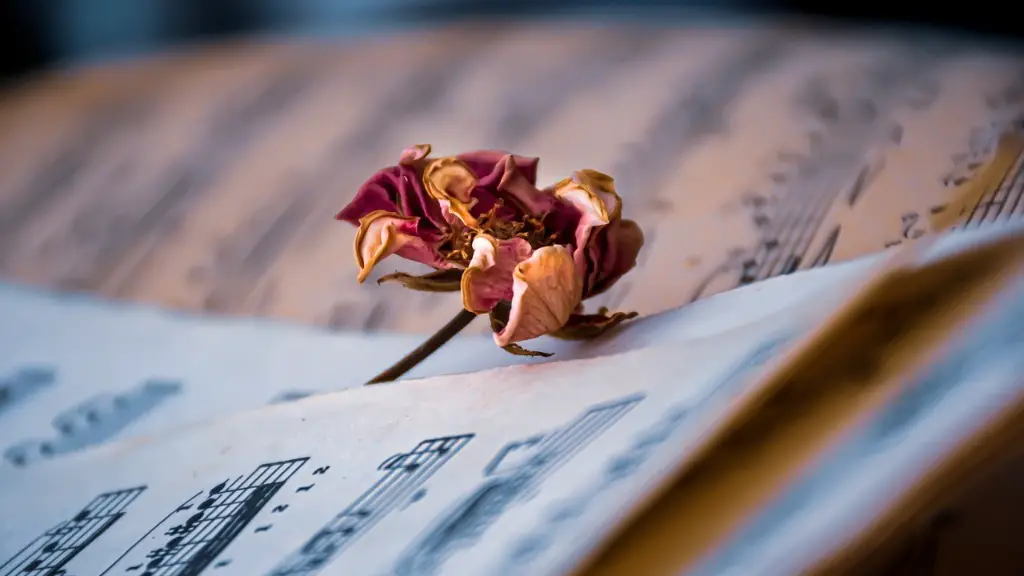Origins of Poetry Slams
Poetry slam has its roots back in the 1980s, when Marc Smith, a construction worker from Chicago, began organizing poetry contests in bars and cafes. In this informal setting, performers competed with each other by coming to the stage and offering their works to the gathered audience, who then voted on their favorite works and awarded the winners. Today, poetry slams are often seen as an alternative to the traditional academic approach to poetry.
At their core, poetry slams are about creating a community of poets, performers, and fans, who share their love of poetry, and who view it through a less academic lens. For example, poets participating in a slam might bring a deeper level of meaning and emotion to their work than is typically seen in traditional academic poetry. Through the power of performance, poets often bring more emotion and depth to their poetry that traditional poets may typically be hesitant to explore.
In today’s slams, poetry is judged on a kind of “points-based” system. The performers are judged on the overall strength of their presentation, as well as their technique. This judging system creates opportunities for poets to bring more energy to their work – leading to more exciting and compelling performances.
For many poets, the power and energy of slam performances is what distinguishes it from more traditional forms of poetry. The immediacy of the performance, and the energy of the audience – both of which can be seen in a slam – add an element to the performance that simply cannot be found in a more sedate and structured setting.
Slams can also give poets the opportunity to engage with the audience in a more interactive way. By addressing the audience directly, or through a simple call and response mechanism, poets can bring a unique energy and warmth to the performances.
Finally, the community spirit that often permeates a slam creates an atmosphere that can be free from judgment or preconceptions. This is a place where poets can take chances and experiment with their art without feeling judged or put off.
Performance and Technique
In a traditional slam, poets often work to create a performance that will captivate and energize the audience. This means that poets may be willing to sacrifice craftsmanship and precision in order to engage the audience more effectively. The emphasis, here, is on the performance, and on creating an experience that the audience can connect with more deeply.
Simultaneously, poets in slams must also possess a certain technical skill. It is important, for instance, that the poet understand their content, their craft, and the nuances of their performance. This means that the poet must be able to keep their performance tight and focused, and to pay attention to the finer points of their work.
So, although the emphasis in a slam may be on the performance, or on the overall vibe of the piece, it is also essential that the poet possess a mastery of craft. It is the combination of technical skill and emotional performance that truly sets a slam apart from more traditional forms of poetry.
Interactivity and Collaboration
Typically, slams don’t feature two poets competing with one another. Instead, a number of poets may collaborate on a single piece, with each poet contributing their individual perspectives. It is this interplay between the performers, and their ability to work off of one another’s ideas, that is at the heart of a slam.
This inter-connectivity can be seen in many of the most successful performance pieces. As the poets work together, and as each individual trends onto new thematic or technical paths, a final piece emerges that is more than the sum of its parts. In this way, slams challenge poets to reach outside of their comfort zones and explore new concepts, ideas and themes.
The collaborative nature of slams also creates a sense of community, which can create a welcoming environment for poets. This sense of community encourages poets to take chances, to experiment, and to explore fresh new concepts without fear of judgment or criticism.
The Creative Freedom of Slams
Finally, one of the most appealing aspects of slams is the creative freedom that they allow poets. In a traditional setting, often it is the form of the poem, and the technical skill of the poet, that is judged most highly. But in a slam, it is the content and the performance that is most often celebrated. As such, poets can feel free to explore whichever topics or techniques they wish, and to develop their content as they see fit.
In this sense, slams are a way for poets to find a certain freedom and liberation in their art. Poets can focus on the topics and ideas that resonate with them personally, and can feel free to express those ideas in whatever form works. In this way, slams can often be seen as a kind of refuge from the expectations and conventions of traditional poetry.
The Impact of Slam Poetry
The rise of slam poetry has not gone unnoticed. Slams have grown in popularity and are now seen in theaters, coffeehouses, and classrooms all over the world, and have had a large impact on the way that poetry is presented and consumed. By creating a more inviting and accessible approach to poetry, slams have opened the door to a new generation of writers, and have helped to bring more people into the fold of poetry than ever before.
The open-ended nature of slams, and the way that they foster collaboration and experimentation, has encouraged many new writers to explore their art in fresh and innovative ways. By breaking down the boundaries between performance and craft, slams also provide poets with an opportunity to expand their skills and to challenge themselves and their audiences.
For these reasons, and for many others, slam poetry is becoming an increasingly popular form of expression, and is inspiring and encouraging a new generation of poets and performers to explore the possibilities of spoken word.
How Slams Connect With Diverse Audiences
A key, and often unspoken, factor in the success of slams is the community, or audience, that it attracts. As many slams are held in unconventional venues, such as coffeehouses or bars, they often attract a more varied, and often younger, crowd than a traditional poetry reading. This can be especially true if the slam is themed around a certain style, or type, of poetry.
In this way, slams can be a kind of bridge between poetry and different audiences, allowing poets to reach a wider cross section of people than they may be able to in a more traditional setting. As a result, slams can often be more intimate, and more welcoming, than more formal approaches to poetry.
By connecting with different audiences, slams can also help to break down the preconceptions that sometimes surround poetry. Instead of being seen as an inaccessible, or elitist, art form, poetry can take on a more inviting and approachable tone.
The Education Value of Sla ms
The rise of slam poetry has also offered educational opportunities to students of all ages. School districts and universities are increasingly recognizing the educational value of slams, and the ways that they can open student’s minds to new forms of expression.
Slams can also be used to explore a wide range of topics and ideas, from personal narratives to broader social and political issues. By drawing connections between these ideas, and by enabling a student to explore their own thoughts and feelings, slams can be a powerful tool for learning and growth.
For this reason, slams are becoming increasingly popular in classrooms and lecture halls around the world, and are inspiring new generations of poets and writers.
The Value of Sla ms for Creators
The freedom and creativity that slams offer writers is a powerful motivator for poets. It is not surprising, then, that slams are increasingly popular as a platform for creators. Through slams, performers can reach an audience more directly and swiftly than they could through more traditional forms of media.
This ability to create and share content rapidly can be powerful for creators, as it enables them to build an audience and to develop their work more quickly. This has allowed many poets to gain both an audience, and critical acclaim, much more swiftly than they would be able to in a traditional setting.
In this way, slams can both reward creators while also connecting them with an audience more quickly than ever before.
In what ways have slams become mainstream?
As slams have grown in popularity, their impact has been felt far beyond the realm of poetry. Cities, municipalities, and schools, for example, are increasingly recognizing the value of slams and are eagerly creating programs and events to make them more accessible.
This has allowed slams to become more mainstream, and to reach a wider audience. This has been particularly true for “slams for change” which are often used to engage with individuals and communities on political and social issues.
Cities are also increasingly utilizing slams as a tool to engage with citizens and to create a space for an authentic exchange of ideas. As a result of this, slams have become an increasingly prominent fixture in many urban settings – something that was once unimaginable.
In countless ways, slams have managed to break down barriers, to spark meaningful conversations, and to create more inclusive spaces within cities and towns.


